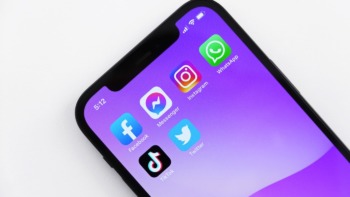TREND 2 Buying: The rise of social commerce
Singles day in China

Three weeks before Singles’ Day 2021 – China’s biggest shopping event – one man sold $1.7bn worth of products. He isn’t the CEO of a brand. He is Austin Li Jiaqi – also known as the Lipstick King. He’s part of an e-commerce phenomenon – one that merges technology, shopping and celebrity.
In many ways, China is streets ahead of the rest of the world when it comes to innovative ecommerce; 45% of all of its purchases were made online in 2020. Li Jiaqi is a driving force in this culture of online shopping; he spends hours showcasing beauty products (hence the Lipstick King moniker) and selling to his millions of followers in real-time.
The closest the western world comes to this are influencer-hosted Instagram lives, or TV shopping channels. Neither format has distilled the boundary between entertainment and shopping quite like China’s livestreamers. We have to look at the entire user journey to understand why.
In China, social media platforms are better optimized for livestreams. Doyun – the Chinese version of TikTok – allows users to make purchases within as little as three taps. Social platform WeChat has multiple sub-apps just for shopping, and mobile payments are highly popular – shopping giant AliBaba has its own mobile payment service, AliPay.
In the realm of social commerce, China is decades ahead – but with Gen Z fuelling purchases the world over, western territories are set to follow, as predicted by marketing coach Danny Denhard: “We will move into ‘live’ shoppable video; shoppable feeds and live buy-a-longs. This will appear across all of the major platforms. Influencers will inject personality into this format, as they take the role of presenters encouraging the audience to shop along.”
We will move into ‘live’ shoppable video; shoppable feeds and live buy-a-longs. This will appear across all of the major platforms. Influencers will inject personality into this format, as they take the role of presenters encouraging the audience to shop along.
Danny Denhard, Marketing Coach
China has dedicated livestream platforms…
TikTok and Instagram are two platforms that Gen Z…
Facebook was quick to pioneer regulated peer-to-peer sales …
As shopping and social media become ever more entwined..
Expert perspective:
Jonno Brech, CEO of Audiens
Additional Resources

Gen Z & The Future of Ecommerce: Mini Report
Find out how Gen Zs will shape the future of ecommerce via this infographic – brought to you by Student…

Ecommerce moments of the week: digital love, perfume brainwaves, and Gen Z-commerce done right
And just like that, we’re back. With a waft of perfume, a chic Scandi outfit and a few candid questions,…

Ecommerce moments of the week: social media takeover
This week, explore how TikTok is helping artists expand their musical capabilities via their platform, and delve into Pinterest’s new…


